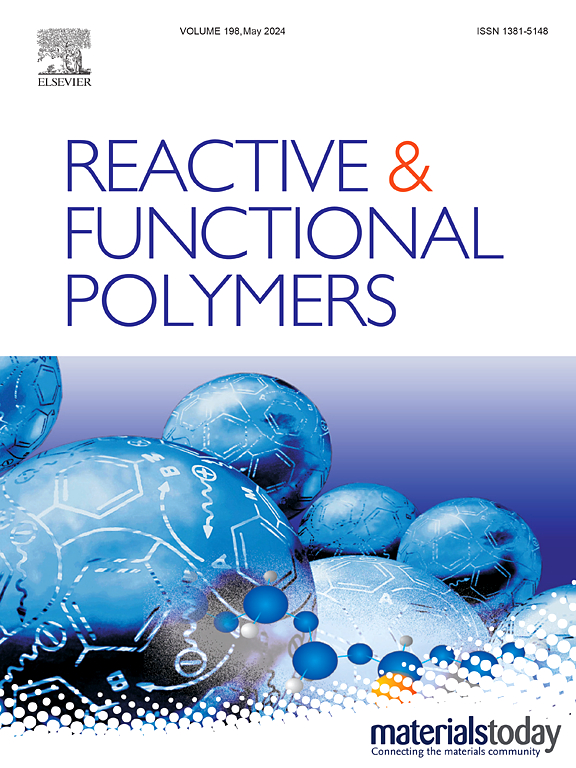Methoxyl-Containing Hyper-Crosslinked Polymer from Largely Bio-Based Biphenyl Methyl Ether and Its Application in Lithium-Sulfur Battery
IF 4.5
3区 工程技术
Q1 CHEMISTRY, APPLIED
引用次数: 0
Abstract
A new biphenyl methyl ether viz 2,2′,3,3′-tetramethoxy-5,5′-bis(methoxymethyl)-1,1′-biphenyl (TBMB) was synthesized starting from vanillin via three-step reaction sequence. The self-polycondensation of TBMB by employing two Bronsted acid catalysts, viz, p-toluenesulfonic acid (PTSA) and trifluoromethanesulfonic acid (TFSA) led to the formation of organic hyper-crosslinked polymers (HCPs) containing built-in methoxyl groups. HCPs were characterized by FTIR, solid state 13C NMR, XPS, XRD, TGA, BET, and FESEM analysis techniques. HCPs synthesized using PTSA (HCP-PTSA) and TFSA (HCP-TFSA) exhibited a Brunauer–Emmett–Teller (BET) surface area of 480 ± 5 and 590 ± 4 m2/g, respectively and consisted of hierarchical pore structures with both micropores and mesopores. HCP-TFSA was evaluated as an active coating layer on conventional polypropylene (PP) separator in lithium-sulfur batteries to suppress the polysulfide shuttling on account of the ability of methoxyl groups to anchor soluble polysulfide species via coordination. The significant polysulfide adsorption capacity and improved cycling stability with a capacity of 617.2 mAh g−1 at 0.5C and 99% capacity retention highlighted the potential of porous HCP containing built-in methoxyl groups in the development of attractive lithium-sulfur battery systems.

生物基联苯甲基醚含甲氧基超交联聚合物及其在锂硫电池中的应用
以香兰素为起始原料,经三步反应合成了2,2 ',3,3 ' -四甲基-5,5 ' -双(甲氧基甲基)-1,1 ' -联苯醚(TBMB)。采用对甲苯磺酸(PTSA)和三氟甲烷磺酸(TFSA)两种Bronsted酸催化剂对TBMB进行自缩聚反应,生成了含内嵌甲氧基的有机超交联聚合物(HCPs)。采用FTIR、固态13C NMR、XPS、XRD、TGA、BET和FESEM等分析技术对HCPs进行了表征。采用PTSA (HCP-PTSA)和TFSA (HCP-TFSA)合成的HCPs的比表面积分别为480±5和590±4 m2/g,具有微孔和介孔的分层孔结构。HCP-TFSA作为锂硫电池常规聚丙烯(PP)隔膜上的活性涂层,利用甲氧基通过配位固定可溶性多硫化物的能力,抑制了多硫化物的穿梭。显著的多硫吸附能力和提高的循环稳定性(0.5℃下容量为617.2 mAh g−1,容量保持率为99%)突出了含有内置甲氧基的多孔HCP在开发有吸引力的锂硫电池系统中的潜力。
本文章由计算机程序翻译,如有差异,请以英文原文为准。
求助全文
约1分钟内获得全文
求助全文
来源期刊

Reactive & Functional Polymers
工程技术-高分子科学
CiteScore
8.90
自引率
5.90%
发文量
259
审稿时长
27 days
期刊介绍:
Reactive & Functional Polymers provides a forum to disseminate original ideas, concepts and developments in the science and technology of polymers with functional groups, which impart specific chemical reactivity or physical, chemical, structural, biological, and pharmacological functionality. The scope covers organic polymers, acting for instance as reagents, catalysts, templates, ion-exchangers, selective sorbents, chelating or antimicrobial agents, drug carriers, sensors, membranes, and hydrogels. This also includes reactive cross-linkable prepolymers and high-performance thermosetting polymers, natural or degradable polymers, conducting polymers, and porous polymers.
Original research articles must contain thorough molecular and material characterization data on synthesis of the above polymers in combination with their applications. Applications include but are not limited to catalysis, water or effluent treatment, separations and recovery, electronics and information storage, energy conversion, encapsulation, or adhesion.
 求助内容:
求助内容: 应助结果提醒方式:
应助结果提醒方式:


